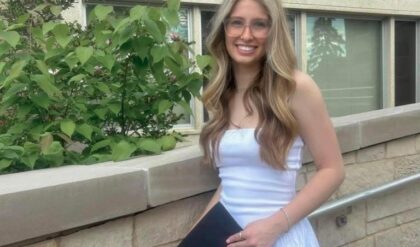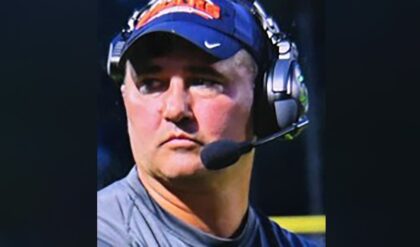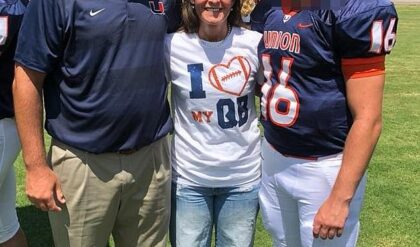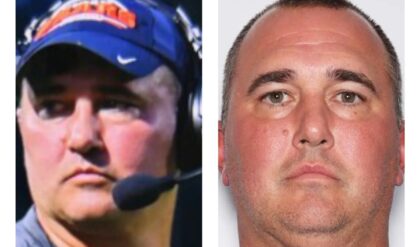“Sometimes what you think is going to be easy turns into a whole adventure.”

Costume designer Alex Bovaird e-chats with Awards Daily about her Emmy-nominated work on True Detective: Night Country.
Talk about day-to-night fashion!
 Courtesy of Alex Bovaird
Courtesy of Alex Bovaird
Costume designer Alex Bovaird went from depicting the lush vacation life of White Lotus in seasons 1 and 2 to bundling up for an Alaskan murder mystery in True Detective: Night Country. In my email chat with Bovaird, we talked about the challenges of shooting in Iceland (a stand-in for Alaska), dressing Inupiac people, and what she considers to be the most iconic look of the series (it involves lamps!).
Read our chat below!
Awards Daily: How did you approach True Detective: Night Country? Given that it takes place in Alaska (aka Iceland), was this unlike most projects you’ve ever worked on?
Alex Bovaird: It was completely unlike any other production I’d ever worked on. The first thing I did in prep was to go to Alaska. I’d never been there and knew the entire shoot would take place in Iceland, so I wanted to learn as much about Alaskan and Inupiaq culture as I could. My team and I spent time meeting with key people at the Anchorage Museum and the Alaska Native Heritage Center. We learned so much about the form and function of what people wear in that part of the world, what the different garments are called, how they originated, what furs are the warmest etc.
We spent a couple of weeks in Alaska commissioning local artisans to do custom builds for us. We also shopped at various furriers, a musk ox farm, and many other places while there so the costumes would be as authentic as possible.
AD: Did you work with specific color palettes that matched the environment?
AB: The eternal darkness gave us both some constraints and some inspiration, although the police uniforms needed to be utilitarian and dark. Our off-duty clothes tended to be brighter so they would pop out of the night. We gave Jodie a milky white parka so that she cut a ghostly figure, and we took many references from the real-life world of the Arctic Circle, where people often wear bright and busy clothing amidst the ice and snow.
AD: Did you do any research on what cops would wear up in this region? How did you stay authentic to the area?
AB: Yes, we spent an enormous amount of time researching the Alaska Department of Public Safety, the Alaska State Troopers, and various local police forces up there. I remember we were particularly inspired by Anne Sears, the first Alaska Native woman to serve as a trooper. She later became Alaska’s first full-time Missing and Murdered Indigenous Persons Investigator. We studied everything we could find about her. There is an amazing docuseries about the real troopers so we mined it for all the details: the intense boots, massive parkas, and trips on snowmobiles that they have to make.
AD: How did you work in a remote location away from brands and shopping you might need to complete your job? That had to be tough!
AB: Getting the garments we needed for the show was really tricky. We were able to spend a few weeks on the ground in Alaska early on, so we exported a great stock to build up. However, when we got over to Iceland, we realized we needed to reach out to a brand that really made sense and aligned with the overall look for the characters that we were after, so we reached out to Carhartt, and they were tremendously helpful.
We had buyers in Iceland, Los Angeles, and Alaska. We also did a fair amount of online buying. Though quite small, Reykjavik had good cold-weather gear and was really easy to ship crates of clothing in and out of. It is also home to 66 North, another key clothing brand who really helped us out. They made our Ennis police parkas and custom-made a size for Danvers (Jodie Foster).
AD: Tell me about dressing the Inupiaq people. What kind of challenges did this present? What were some of your key takeaways when creating their looks?
AB: This was a people and culture that was largely unknown to me, and I was amazed at the way they dressed for their survival and how they mixed Western clothing with their traditional garments. They might wear some canvas overalls with a sealskin parka, or wear a graphic hoodie with some caribou trousers. Looks I hadn’t ever seen for sure. There is also a custom of making their own specific garments, a cover called an Atikluk or Kuspuk, and their parkas with big fur hoods, and we learned how to make them using traditional hand sewing. The challenge was getting some of the materials in Iceland, so many fabrics were flown in from Alaska, Canada, and the continental US.
AD: What one look from the show do you consider to be the most iconic for the series? Or is there not one?
AB: Danvers and Navarro in their police parkas and hats with their head lamps on! What drew me to this job and telling story was Issa’s [Lopez] fantastic writing of these two total badasses, and bringing them to life with the team was really fun and fulfilling. The show has such a huge following, and I enjoyed getting to grips with the cold-weather uniforms. Sometimes what you think is going to be easy turns into a whole adventure.
AD: Is there a particular look for Alaskan people? Do they dress a lot differently than people in the continental United States?
AB: Well, the native Alaskans definitely have something truly unique with their traditional garments and use of fur, such as wolverine and arctic fox and salmon berry prints! The state as a general has a propensity for practical and hard-wearing clothing, camo gear, Carhartt, and boots! It is really the frontier!



